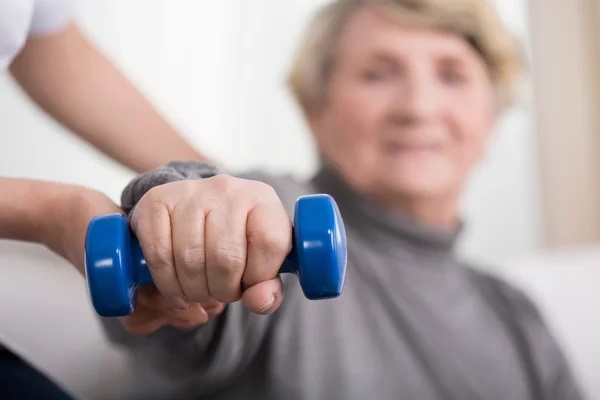STROKE REHABILITATION
By Dr. Ayesha and Dr. Vivian Consultant Physiotherapists Spectrum Physio Centre.
Introduction
- Stroke is a medical condition in which poor blood flow to the brain causes cell death.
- There are two main types of stroke: ischemic, due to lack of blood flow, and hemorrhagic, due to bleeding.
- Both cause parts of the brain to stop functioning properly.
- If symptoms last less than one or two hours, the stroke is a transient ischemic attack (TIA), also called a mini-stroke.
- Many etiologies can lead to a stroke. Some of the most common risk factors include; Hypertension, diabetes mellitus, hypercholesterolemia, physical inactivity, obesity, genetics, and smoking.
- Signs and symptoms often appear soon after the stroke has occurred.
- Signs and symptoms of a stroke may include an inability to move or feel on one side of the body, problems understanding or speaking, dizziness, or loss of vision to one side.
Ischaemic stroke
- Ischaemic strokes are the most common, accounting for up to 80% of strokes, and occur when there is an occlusion of a blood vessel impairing the flow of blood to the brain.
- Ischaemic Strokes are divided into: - Thrombotic, Embolic and Systemic hypoperfusion.
- Thrombotic means a blood clot within the main brain artery, Embolic means a blood clot that has dislodged from other area and lodged into the brain artery.
- Systemic Hypoperfusion means a general decrease in blood supply, eg. 1. in shock 2.occurring in small vessels(lacunar infarcts) caused by chronic, uncontrolled hypertension.
Hemorrhagic stroke
- Haemorrhagic Strokes occur when a blood vessel in the brain ruptures and bleeds.
- This leads to increased intracranial pressure which can further cause damage to the healthy/other parts of the brain.
- The main cause of hemorrhagic stroke is high blood pressure, followed by traumatic head injury.
Presentation based on affected side
- The terms Left Brain Stroke and Right Brain Stroke refer to the side of the brain where the obstruction causing the stroke occurs.
- There is not a worse or better side to have a stroke on as both sides control many important functions, but a more severe stroke will result in amplified effects.
- For any survivor to begin seeing positive changes after a stroke, the rehabilitation process must start right away, regardless of which side of the brain the stroke occurred.
- Although the effects of a stroke can be severe, the brain has an incredible ability to adjust and even reconnect neurological pathways. This is called Neuroplasticity.
Left brain stroke
- Possible paralysis on the right side of the body
Speech/language problems
Slow, cautious behavior
Impairment of organizational abilities
Facial weakness or problems with swallowing
Memory loss
Right brain stroke
- Possible paralysis on the left side of the body
Vision problems
Quick, overly curious behavior
Poor decision making
Facial weakness or problems swallowing
Memory loss
Management/Interventions
- Initial acute stage management mainly involves to stabilize the patient.
- Critical decisions focus on the need for intubation, blood pressure control, and determination of risk/benefit for thrombolytic intervention.
- Patients presenting with Glasgow Coma Scale scores of 8 require emergent airway control via intubation.
For the Physiotherapists
- Physiotherapists should be involved early and should make their own assessment of how much they can work with a patient.
- Early mobilisation is associated with better outcomes, even though the early presentation of the disease may look confounding.
- Physical exercise acts as preconditioning stimuli that offer brain protection effects and are safe and workable treatment options for providing increased neuroplasticity.
Primary Goals of Rehabilitation
- Prevent complications
- Minimize impairments
- Maximize function
Upper Limb Impairments:
- Subluxation
Changes in Sensation
Contracture
Swelling
Coordination Problems
Weakness
Altered Muscle Power
Changes in Muscle Tone
Hand Dysfunction
Treatment options
- There is evidence that strength train improve upper-limb strength and function without increasing tone or pain in individuals with stroke.
- Balance training has also showed positive results to improve static, dynamic and gait balance in patients with stroke.
- Modified Constraint-Induced Movement Therapy.
- Gaming and Virtual reality training




